
 I owe this one to Finncon, or more precisely to the traditional academic conference that takes places on the Friday before Finncon. Irma messaged me to tell me that one of the papers was about Oryx and Crake, and this strange academic book, neither of which I was familiar with. Could I help? Well, I had some memory of reading Oryx and Crake, and being deeply unimpressed. But as for this Ghost Stories for Darwin thing? A book on evolutionary biology written by a woman with a very Indian name. WTF? As I believe people say these days.
I owe this one to Finncon, or more precisely to the traditional academic conference that takes places on the Friday before Finncon. Irma messaged me to tell me that one of the papers was about Oryx and Crake, and this strange academic book, neither of which I was familiar with. Could I help? Well, I had some memory of reading Oryx and Crake, and being deeply unimpressed. But as for this Ghost Stories for Darwin thing? A book on evolutionary biology written by a woman with a very Indian name. WTF? As I believe people say these days.
My expectations were not improved when I started to read the book on the train to Jyväskylä. I explained to Ursula Vernon and her husband, Kevin, why I would have my nose in a book during the trip. They looked at me as if I had just confessed some sort of masochist fetish. What good could possibly come of this bizarre exercise in self-immolation?
I have to admit that I wasn’t expecting much myself. I have always viewed evolutionary biologists as being insecure white men who are racist, misogynist, queerphobic and ableist, and who invent pseudoscientific theories to justify their bigotries; said theories being provable as correct solely by the existence of patriarchy.
Thankfully I soon changed my mind. Banu Subramaniam grew up in India and traveled to the USA to pursue a PhD in evolutionary biology. She was, by her own admission, naive and starry-eyed. She saw the USA as being a land free of the classism she was familiar with in India, she saw science as being a discipline free of sexism, and she had no idea about the level of racism in US culture. That she survived the experience is a testament to her strength of will, and also to the support she gained from the Women’s Studies department in her university.
Subramaniam’s subject for her PhD was the Morning Glory, a plant closely related to the notorious British Convolvulus, hated by gardeners throughout the land. The convolvulus does have very pretty white flowers (there will probably be lots in my back yard when I get home), but the morning glory has a wide variety of flower colourations, and it is these that Subramaniam was planning to study.
Doing so, and in the process experiencing life as a woman of colour in the USA, led to a political awakening that has established Subramaniam as one of the foremost experts on gender in the sciences. And if that immediately brings to mind the phrase, “women in science”, well you are exactly the sort of ill-informed person that Ghost Stories for Darwin is intended for.
I should note at the start that the book does not entirely succeed. Subramaniam is not a professional science communicator, and there are times, particularly when she is talking about her own academic specialisms, that she veers into complex jargon. Thankfully I have a science degree and was able to make sense of most of it, but other readers may find it very hard going.
Being an academic book, Ghost Stories for Darwin has a subtitle. It is, The Science of Variation and The Politics of Diversity. This is a good place to start looking at the argument. One of the great debates within evolutionary biology is the role of variation in evolution. Some people in the field believe that diversity has an evolutionary advantage for the species, as that provides a wide range of mutations to help it evolve into something better. Others believe that all variation is bad, and that only the fittest variation should be allowed to pass its genes on to new generations. This latter view leads inevitably to eugenics.
But, and here is our first important feminist lesson of the day, all binaries are false. Neither of the explanations above helps us understand why variation in the colour of morning glory flowers persists through hundreds of generations, and can exhibit stable shares of the population to which the species will return if the balance is perturbed. Variation in flower colour appears to be baked in to the morning glory as a species.
The answer to this conundrum is that evolution is not just driven by genetics. It is also influenced by a range of environmental factors including, but not limited to, climate, pollinator preference, soil conditions, human cultivation and so on. Subramaniam quickly discovered that the scientific ideas of doing a simple, one-variable experiment on a field of morning glory flowers tells you nothing.
Exploring the underlying assumptions of her field, and seeking support as a doubly marginalized person within US academia, led Subramaniam both to discover the horrendous eugenicist underpinning of her discipline, and the fundamentally masculinist nature of science as it is practiced.
One interesting aspect of Subramaniam’s section on eugenics is the fact that many of the pioneers of the field saw themselves as striving for a better world, and even as being good Socialists. The idea that the socially inferior should, for their own good, not be allowed to survive, is deeply seductive. While most of the extreme horrors perpetrated in the name of this belief have been minority ethnic groups, the differently abled and queer communities can recognise the syndrome. There have been many times when I have been told that my life would have been easier had I not been born.
Subramaniam moves on from eugenics to matters of race, and the complicated discipline known as Invasion Biology. We are all, I am sure, familiar with stories about how our native ecosystems are being “invaded” by dangerous foreign plants that are “taking over” and “crowding out” native species. Would it surprise you that there is a direct correlation between the frequency of such stories in the newspapers and the level of popular concern about human immigration? And the two types of story use exactly the same types of language.
Of course migration of plant species around the world has a long and in many cases glorious history. Where would our cuisines be without the potato, the tomato, and the chili pepper, all of which were unknown outside the Americas before Columbus accidentally ran into them on his way to India. The famous Georgia Peach is an immigrant from China. The same is true for animal species, though sometimes a little creative marketing is required. The Patagonia Toothfish was unheard of in restaurants before it cleverly changed its name to the Chilean Sea Bass.
The final section of the book is about gender, and it focuses on how the practice of science has been socially constructed in a very masculine fashion. A woman wishing to practice science has to buy into that construction and present herself as “one of the boys” in order to be taken seriously as a scientist. She must not wear make-up, she must not show emotion, and so on. Or at least, she should do so inside the lab. Outside the lab, in social spaces, she must present as conventionally feminine. After all, she will soon want to give up her career and become a wife and mother instead.
Feminist lesson two of the day is that all too often talk of gender focuses solely on the “woman problem”. It talks about how women must change themselves in order to fit into the masculine world, or about the accommodations that must be made for women because they do things like have families. (Men never have families, they have wives to do that for them.) Subramaniam says:
[…] the consistent emphasis on family and women reinforces essentialist ideas about women. What has remained unchallenged is the normative model of the male as the ideal scientist, which insists on productivity that can only be achieved by very long hours, a singular dedication to work, and an exclusive focus on one’s profession.
It occurs to me that many of the lessons Subramaniam presents about life in academia, particularly about the sink-or-swim culture of graduate education, are equally applicable outside of the sciences. Indeed, the failure of senior staff to properly train their subordinates in anything other than the technical aspects of the job at hand (and not in how to do things like be a good manager) is endemic in the world of work at large.
Ghost Stories for Darwin was published in 2014, and there are probably areas where its analysis of academic culture in the USA are out of date. In particular, while Subramaniam did see the commercialization of universities coming, she did not know how close it would come to destroying the institutions it was supposed to rescue.
I noted also that there is very little discussion of sexuality as a marginalized identity. Subramaniam does note that it is an issue, but when she actually talks about it she tends to do so by contrasting the profoundly asexual nature of laboratory life with the expectation of normative heterosexuality outside of the lab. She does make brief note of the famous trans masculine neurobiologist, Ben Barres, to illustrate just how foolish misogynist ideas of what makes a good scientist are, but her discussion of gender is primarily limited to performance rather than identity.
These, however, are minor quibbles. Ghost Stories for Darwin is a fascinating and well-argued book that gave me lots of useful pointers as to how to think about gender and its effects on the world.
Which leaves us with one question: where do the ghosts come in? It turns out that Subramaniam has borrowed the metaphor from Bollywood cinema. In a Bollywood movie, a ghost is always someone who has been unjustly forgotten and ignored after their death, and perhaps in life. They desperately want to be listened to, understood, acknowledged, and recognized so that they can stop haunting the living and rest in peace. The history of feminism, in all areas of life, is a story of Bollywood ghosts.
 Title:
Title: Ghost Stories for Darwin
By: Banu SubramaniamPublisher: University of Illinois Press
Purchase links:Amazon UKAmazon USBookshop.org UKSee
here for information about buying books though
Salon Futura

 This is the September 2024 issue of Salon Futura. Here are the contents.
This is the September 2024 issue of Salon Futura. Here are the contents. Cover: Resurrection Code: This month's cover art is by Ben Baldwin
Cover: Resurrection Code: This month's cover art is by Ben Baldwin Space Oddity: Decibel Jones and the Absolute Zeroes are back in a new crazy caper. Rock 'n' Roll never read so good.
Space Oddity: Decibel Jones and the Absolute Zeroes are back in a new crazy caper. Rock 'n' Roll never read so good. The Sunforge: Book two of Sascha Stronach's Endsong trilogy has arrived, and some of the mysteries from book one are explained.
The Sunforge: Book two of Sascha Stronach's Endsong trilogy has arrived, and some of the mysteries from book one are explained.  Eyes of the Void: Adrian Tchaikovsky writes books faster than Cheryl can read them, but a dent has been made in the TBR pile.
Eyes of the Void: Adrian Tchaikovsky writes books faster than Cheryl can read them, but a dent has been made in the TBR pile. Lyda Morehouse Interview: Cheryl and Lyda chat about Resurrection Code and the influences on the AngeLINK series
Lyda Morehouse Interview: Cheryl and Lyda chat about Resurrection Code and the influences on the AngeLINK series Star Trek Prodigy – Season #2: The crazy kids are back in the latest animation offering from the Star Trek franchise. And so is the Emergency Holographic Doctor.
Star Trek Prodigy – Season #2: The crazy kids are back in the latest animation offering from the Star Trek franchise. And so is the Emergency Holographic Doctor. Speculative Insight: Can you make a paying venue for SF&F non-fiction work? Alex Pierce is the latest to try.
Speculative Insight: Can you make a paying venue for SF&F non-fiction work? Alex Pierce is the latest to try. The Acolyte: The latest TV series from the Star Wars franchise seems to have bitten off more than it can chew.
The Acolyte: The latest TV series from the Star Wars franchise seems to have bitten off more than it can chew. Editorial – September 2024: In which going to England proves dangerous
Editorial – September 2024: In which going to England proves dangerous This is the cover art that Ben Baldwin produced for Resurrection Code, the fifth book in Lyda Morehouse’s AngeLINK series. The previous four covers had been done by Bruce Jensen. As he wasn’t available this time round, we asked Ben to produce something in the same style. The only other direction he got was that the central figure should be a mouse avatar, and that the background should be Egyptian-themed. He delivered magnificently.
This is the cover art that Ben Baldwin produced for Resurrection Code, the fifth book in Lyda Morehouse’s AngeLINK series. The previous four covers had been done by Bruce Jensen. As he wasn’t available this time round, we asked Ben to produce something in the same style. The only other direction he got was that the central figure should be a mouse avatar, and that the background should be Egyptian-themed. He delivered magnificently.
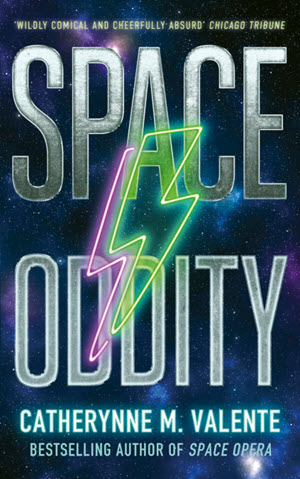 Get your feather boas and glitter ready, folks. It is time for another round of the Metagalactic Grand Prix! Or, in other words, Catherynne M Valente has written a sequel to Space Opera.
Get your feather boas and glitter ready, folks. It is time for another round of the Metagalactic Grand Prix! Or, in other words, Catherynne M Valente has written a sequel to Space Opera.
 I’ve been looking forward to this book for some time. It was clear from the first book in the series, The Dawnhounds, that there was a lot to be learned about the world in which the book is set. In particular, while some of the characters are able to do magic, and attribute this to the favour of gods, it is obvious that the gods are actually people (and therefore not actually gods, if you were at the “Gods in Fantasy” panel at Worldcon).
I’ve been looking forward to this book for some time. It was clear from the first book in the series, The Dawnhounds, that there was a lot to be learned about the world in which the book is set. In particular, while some of the characters are able to do magic, and attribute this to the favour of gods, it is obvious that the gods are actually people (and therefore not actually gods, if you were at the “Gods in Fantasy” panel at Worldcon).
 I very much enjoyed the first book in Adrian Tchaikovsky’s The Final Architecture series, and bought the other two books as soon as they came out. But they are enormous, which is a bit off-putting when you have a lot of books to read. Thankfully the Best Series Hugo gave me the impetus I needed to get back into the saddle.
I very much enjoyed the first book in Adrian Tchaikovsky’s The Final Architecture series, and bought the other two books as soon as they came out. But they are enormous, which is a bit off-putting when you have a lot of books to read. Thankfully the Best Series Hugo gave me the impetus I needed to get back into the saddle.
 The new edition of Resurrection Code is due for release on October 3rd. Lyda and I are very excited about this, because at last the AngeLINK series has all five books back in print and looking line a set. So we did a podcast to talk about how the book came to be, and why we wanted it as it is.
The new edition of Resurrection Code is due for release on October 3rd. Lyda and I are very excited about this, because at last the AngeLINK series has all five books back in print and looking line a set. So we did a podcast to talk about how the book came to be, and why we wanted it as it is. The animation folks at Star Trek have another huge success on their hands. Whereas Lower Decks manages to love Trek whilst thoroughly taking the piss out of it, Prodigy has turned into a classic Trek series with a full-on space opera story arc and plenty of great Trek moments.
The animation folks at Star Trek have another huge success on their hands. Whereas Lower Decks manages to love Trek whilst thoroughly taking the piss out of it, Prodigy has turned into a classic Trek series with a full-on space opera story arc and plenty of great Trek moments. One of the things that irritates me about the world is that non-fiction is valued much less highly than fiction. I could see this when I was editing non-fiction for Clarkesworld. It was clear from the reader surveys that a lot of the readers didn’t bother with the content I was acquiring. They just read the fiction. And when I tried running Salon Futura as a paying venue for non-fiction, it quickly became obvious that most SF&F readers were not willing to pay for a non-fiction magazine. You can see the same thing in the wider book-publishing world too. Academics are generally expected to write for free, despite the fact that the books they write are sold for ridiculous amounts. And public historians are moving more and more into what is called “creative non-fiction”. Meanwhile garbage like Ancient Apocalypse gets made for Netflix while actual archaeologists can’t get a look-in.
One of the things that irritates me about the world is that non-fiction is valued much less highly than fiction. I could see this when I was editing non-fiction for Clarkesworld. It was clear from the reader surveys that a lot of the readers didn’t bother with the content I was acquiring. They just read the fiction. And when I tried running Salon Futura as a paying venue for non-fiction, it quickly became obvious that most SF&F readers were not willing to pay for a non-fiction magazine. You can see the same thing in the wider book-publishing world too. Academics are generally expected to write for free, despite the fact that the books they write are sold for ridiculous amounts. And public historians are moving more and more into what is called “creative non-fiction”. Meanwhile garbage like Ancient Apocalypse gets made for Netflix while actual archaeologists can’t get a look-in. I really wanted to like this series. It had Carrie-Ann Moss. It featured a trans actress (Abigail Thorn). There was significant writing and production involvement for Jen Richards, who is one of the most successful trans women in Hollywood. It would really have annoyed the dudebros had the show been a big success.
I really wanted to like this series. It had Carrie-Ann Moss. It featured a trans actress (Abigail Thorn). There was significant writing and production involvement for Jen Richards, who is one of the most successful trans women in Hollywood. It would really have annoyed the dudebros had the show been a big success.

 This is the August 2024 issue of Salon Futura. Here are the contents.
This is the August 2024 issue of Salon Futura. Here are the contents. Echo of Worlds
Echo of Worlds Beyond the Light Horizon
Beyond the Light Horizon A Marvellous Light
A Marvellous Light Rose/House
Rose/House Worldcon #82
Worldcon #82 Finncon 2024
Finncon 2024 Ghost Stories for Darwin
Ghost Stories for Darwin What Is Hopepunk?
What Is Hopepunk?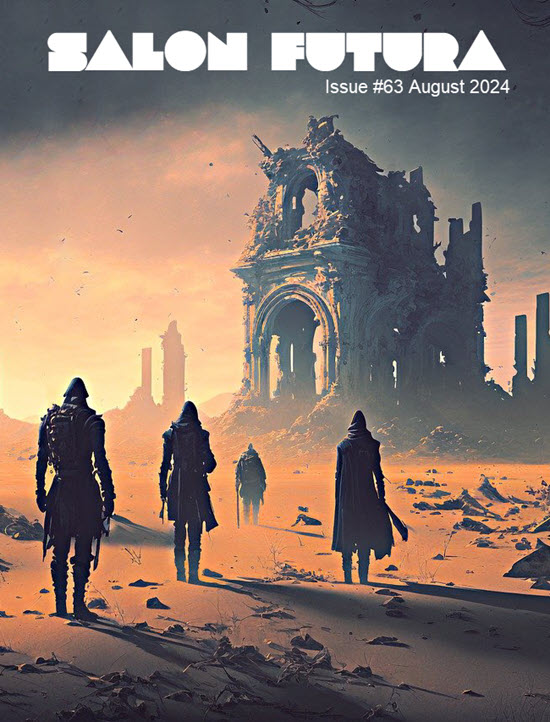 For this issue’s cover we are back to Pixabay and a very nice far future archaelogists piece from Gordon Taylor. As usual, you can find out more about the artist by these convenient links:
For this issue’s cover we are back to Pixabay and a very nice far future archaelogists piece from Gordon Taylor. As usual, you can find out more about the artist by these convenient links: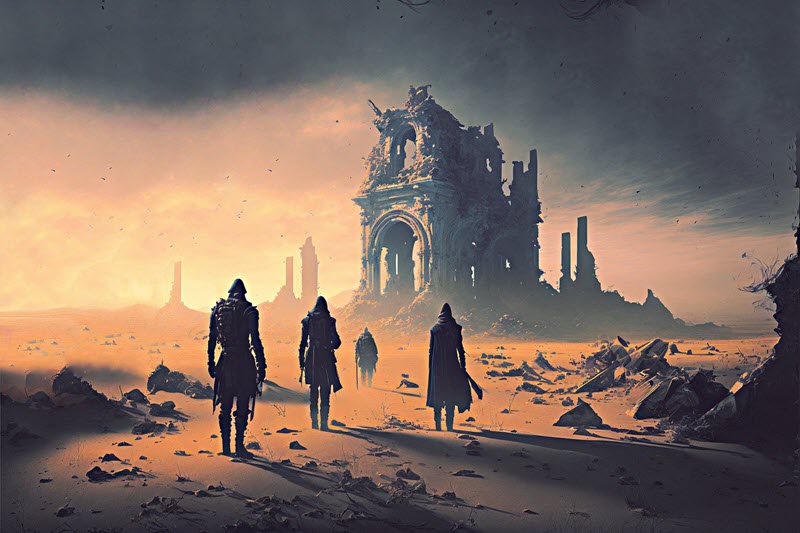
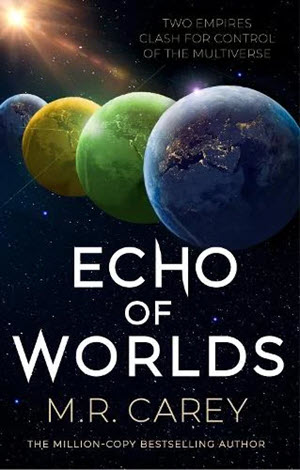 Here is a book that I have been eagerly waiting for some time, and now find very difficult to review. Mike Carey’s Pandominium duology is not two separate novels, it is one long novel split in two for publication purposes, and with some shock reveals at the end of part 1 that make talking about part 2 in a spoiler-free way quite challenging.
Here is a book that I have been eagerly waiting for some time, and now find very difficult to review. Mike Carey’s Pandominium duology is not two separate novels, it is one long novel split in two for publication purposes, and with some shock reveals at the end of part 1 that make talking about part 2 in a spoiler-free way quite challenging.
 When I reviewed Beyond the Reach of Earth, the second volume in Ken MacLeod’s Lightspeed Trilogy, I found myself asking why there will be a book three. Clearly there were unanswered questions at the end of that book, but exactly which ones MacLeod would pick up and run with was another matter entirely. As it turned out, Beyond the Light Horizon is something else entirely.
When I reviewed Beyond the Reach of Earth, the second volume in Ken MacLeod’s Lightspeed Trilogy, I found myself asking why there will be a book three. Clearly there were unanswered questions at the end of that book, but exactly which ones MacLeod would pick up and run with was another matter entirely. As it turned out, Beyond the Light Horizon is something else entirely.
 I was familiar with all of the Best Series finalists for this year’s Hugos bar one: The Last Binding by Freya Marske. Therefore I decided to give the first book a try. A Marvelous Light could probably be described as being in the subgenre of English Magic fantasies. Like Jonathan Strange and Mr. Norrell, it centers on the fact that some people in England (upper class people, obviously) have preserved magical skills over the ages and now (in this case in Edwardian times rather than Georgian) this is becoming a matter of political importance.
I was familiar with all of the Best Series finalists for this year’s Hugos bar one: The Last Binding by Freya Marske. Therefore I decided to give the first book a try. A Marvelous Light could probably be described as being in the subgenre of English Magic fantasies. Like Jonathan Strange and Mr. Norrell, it centers on the fact that some people in England (upper class people, obviously) have preserved magical skills over the ages and now (in this case in Edwardian times rather than Georgian) this is becoming a matter of political importance.
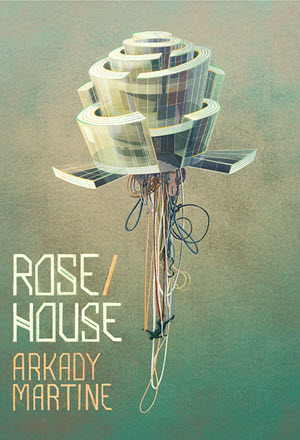 There was some pretty stiff competition in the Novella category for the Hugos this year. I have already reviewed Thornhedge, Mammoths at the Gates, and The Mimicking of Known Successes, all of them favourably. But there was also an Arkady Martine story on the list, and I’ve loved everything of hers I have read. How would Rose/House stack up to the others?
There was some pretty stiff competition in the Novella category for the Hugos this year. I have already reviewed Thornhedge, Mammoths at the Gates, and The Mimicking of Known Successes, all of them favourably. But there was also an Arkady Martine story on the list, and I’ve loved everything of hers I have read. How would Rose/House stack up to the others?
 While I have been to many Worldcons, this was the first one at which I have been a dealer. The experience is very different. It is also my first post-COVID Worldcon, which also changed things a lot.
While I have been to many Worldcons, this was the first one at which I have been a dealer. The experience is very different. It is also my first post-COVID Worldcon, which also changed things a lot. It is great to be back. One of the worst things about the pandemic was that I could not make my regular trips to Finland. I have been suffering sauna-deprivation.
It is great to be back. One of the worst things about the pandemic was that I could not make my regular trips to Finland. I have been suffering sauna-deprivation. I owe this one to Finncon, or more precisely to the traditional academic conference that takes places on the Friday before Finncon. Irma messaged me to tell me that one of the papers was about Oryx and Crake, and this strange academic book, neither of which I was familiar with. Could I help? Well, I had some memory of reading Oryx and Crake, and being deeply unimpressed. But as for this Ghost Stories for Darwin thing? A book on evolutionary biology written by a woman with a very Indian name. WTF? As I believe people say these days.
I owe this one to Finncon, or more precisely to the traditional academic conference that takes places on the Friday before Finncon. Irma messaged me to tell me that one of the papers was about Oryx and Crake, and this strange academic book, neither of which I was familiar with. Could I help? Well, I had some memory of reading Oryx and Crake, and being deeply unimpressed. But as for this Ghost Stories for Darwin thing? A book on evolutionary biology written by a woman with a very Indian name. WTF? As I believe people say these days.
 For me, the most interesting panel at Finncon was the one on Hopepunk. It is not a genre that I have paid much attention to in the past. I had a vague idea that to qualify as Hopepunk a book had to be unchallenging, heartwarming and relentlessly positive, after the manner of a Travis Baldree novel. This panel disabused me of that notion, and also got me thinking that Wizard’s Tower might have published some Hopepunk.
For me, the most interesting panel at Finncon was the one on Hopepunk. It is not a genre that I have paid much attention to in the past. I had a vague idea that to qualify as Hopepunk a book had to be unchallenging, heartwarming and relentlessly positive, after the manner of a Travis Baldree novel. This panel disabused me of that notion, and also got me thinking that Wizard’s Tower might have published some Hopepunk.
 This is the June 2024 issue of Salon Futura. Here are the contents.
This is the June 2024 issue of Salon Futura. Here are the contents. What Feasts at Night
What Feasts at Night Queering Faith in Fantasy Literature
Queering Faith in Fantasy Literature Waypoint Seven
Waypoint Seven Unexploded Remnants
Unexploded Remnants Tolkien Lecture 2024
Tolkien Lecture 2024 The Book Blinders
The Book Blinders Doctor Who 15-1
Doctor Who 15-1 3 Body Problem – Netflix
3 Body Problem – Netflix Furiosa
Furiosa This is the art that Ben Baldwin did for the lastest Chaz Brenchley Crater School book, Mary Ellen, Craterean! As always, an unadulterated version of the art can be found below.
This is the art that Ben Baldwin did for the lastest Chaz Brenchley Crater School book, Mary Ellen, Craterean! As always, an unadulterated version of the art can be found below.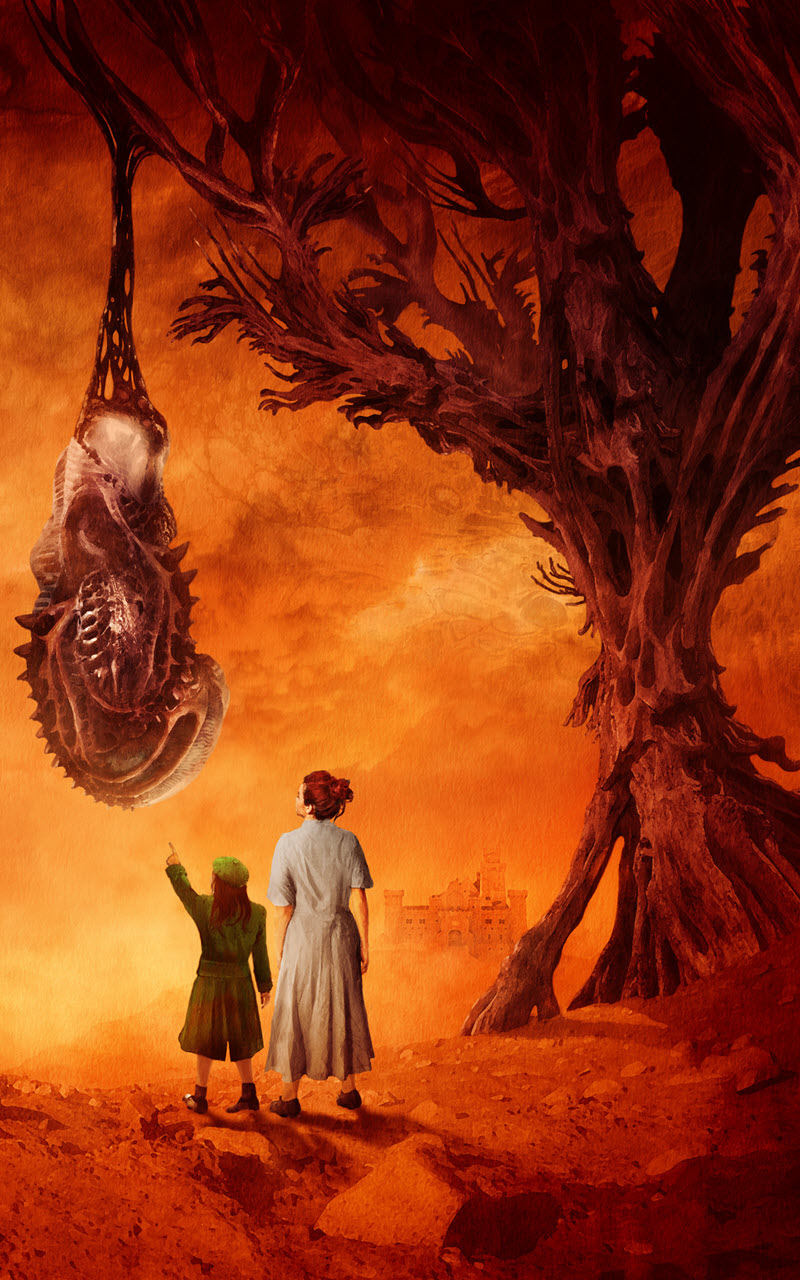
 I’m a little surprised to see a new Alex Easton story. The first one seemed complete in itself. But novella series have been very successful so I’m not too surprised that this is happening.
I’m a little surprised to see a new Alex Easton story. The first one seemed complete in itself. But novella series have been very successful so I’m not too surprised that this is happening.
 One of the great things about the ‘Perspectives on Fantasy’ series of academic books being produced by the Centre for Fantasy and the Fantastic at the University of Glasgow is that all the books get a paperback edition at a price that mere humans can afford. You do have to wait about a year after the publication of the hardcover, but you will get it. I’ve been eagerly awaiting Taylor Driggers’ book, and am pleased I can finally own a copy.
One of the great things about the ‘Perspectives on Fantasy’ series of academic books being produced by the Centre for Fantasy and the Fantastic at the University of Glasgow is that all the books get a paperback edition at a price that mere humans can afford. You do have to wait about a year after the publication of the hardcover, but you will get it. I’ve been eagerly awaiting Taylor Driggers’ book, and am pleased I can finally own a copy.
 Here’s one you may not have heard of. Xan van Rooyen is a South African non-binary person currently living in Finland. Xan and I have been on a number of panels together at Nordic conventions, and at this year’s Finncon we will be discussing Queer Fantasies. Waypoint Seven, however, is not exactly a fantasy, it is a space opera with magic.
Here’s one you may not have heard of. Xan van Rooyen is a South African non-binary person currently living in Finland. Xan and I have been on a number of panels together at Nordic conventions, and at this year’s Finncon we will be discussing Queer Fantasies. Waypoint Seven, however, is not exactly a fantasy, it is a space opera with magic.
 When I first started writing book reviews, I could count the number of trans authors active in the speculative fiction field on the fingers of one hand. These days they are everywhere. So welcome, Elaine Gallagher, previously best known as a Scottish poet, but now the latest in the stable of novella writers for Tor.com.
When I first started writing book reviews, I could count the number of trans authors active in the speculative fiction field on the fingers of one hand. These days they are everywhere. So welcome, Elaine Gallagher, previously best known as a Scottish poet, but now the latest in the stable of novella writers for Tor.com.
 It was that time of year again, so off I went to Oxford for the annual Tolkien Lecture on Fantasy Literature. This year was a bit special. That was partly because at long last a memorial to Professor Tolkien was to be unveiled in Pembroke College. That was as much a project as the lecture series itself: something that Gabriel Shenk, Will Badger and their colleagues had pressed the college for from their student days. Because really Pembroke should make more of its most famous Fellow.
It was that time of year again, so off I went to Oxford for the annual Tolkien Lecture on Fantasy Literature. This year was a bit special. That was partly because at long last a memorial to Professor Tolkien was to be unveiled in Pembroke College. That was as much a project as the lecture series itself: something that Gabriel Shenk, Will Badger and their colleagues had pressed the college for from their student days. Because really Pembroke should make more of its most famous Fellow. Our story begins in 2011 with the British Library’s first ever exhibition of science fiction. John Clute, inevitably, was called in to advise on the project. But he ended up doing rather more than that, including lending some books from his own collection for display. Because the British Library (BL), an institution tasked with being a repository for the nation’s literature, does a rather shoddy job of preserving books.
Our story begins in 2011 with the British Library’s first ever exhibition of science fiction. John Clute, inevitably, was called in to advise on the project. But he ended up doing rather more than that, including lending some books from his own collection for display. Because the British Library (BL), an institution tasked with being a repository for the nation’s literature, does a rather shoddy job of preserving books.
 I’ve not been a great fan of Doctor Who over the past decade or so. That’s partly because I seem to be allergic to almost everything that Steven Moffat writes. But also I just didn’t get it. I mostly wasn’t very invested in the characters or the stories. I’m pleased to say that, with the new season, that’s all changed.
I’ve not been a great fan of Doctor Who over the past decade or so. That’s partly because I seem to be allergic to almost everything that Steven Moffat writes. But also I just didn’t get it. I mostly wasn’t very invested in the characters or the stories. I’m pleased to say that, with the new season, that’s all changed. I gave up on the first of Cixin Liu’s novels because it was very slow, and reminded me of the sort of science fiction that I read when I was a teenager. Consequently I can’t comment on the quality of Benioff & Weiss’ TV show as an adaptation of the books. As I understand it, they have diverged radically from the original. So I’m going to judge it in isolation.
I gave up on the first of Cixin Liu’s novels because it was very slow, and reminded me of the sort of science fiction that I read when I was a teenager. Consequently I can’t comment on the quality of Benioff & Weiss’ TV show as an adaptation of the books. As I understand it, they have diverged radically from the original. So I’m going to judge it in isolation. Furiosa is a prequel to Mad Max: Fury Road. It tells the story of the titular character from her girlhood through to become the capable woman that we know from the earlier film. It is, in other words, cashing in on the success of Fury Road. But is it worth it? Well…
Furiosa is a prequel to Mad Max: Fury Road. It tells the story of the titular character from her girlhood through to become the capable woman that we know from the earlier film. It is, in other words, cashing in on the success of Fury Road. But is it worth it? Well…
 This is the May 2024 issue of Salon Futura. Here are the contents.
This is the May 2024 issue of Salon Futura. Here are the contents. Ninth Life
Ninth Life The Brides of High Hill
The Brides of High Hill Thornhedge
Thornhedge The Association of Welsh Writing in English Conference
The Association of Welsh Writing in English Conference The Word
The Word Cunning Folk and Familiar Spirits
Cunning Folk and Familiar Spirits X-Men ’97
X-Men ’97 Star Trek Discovery – The Final Season
Star Trek Discovery – The Final Season This issue’s cover is the last of the Iain J Clark covers that I’m running to help promote the Glasgow Worldcon (and, of course, Iain’s work). This one is called Green(ock) Woman. I have no idwa what Scottish thistles smell like, having never got close enough to one to find out, but I love the concept.
This issue’s cover is the last of the Iain J Clark covers that I’m running to help promote the Glasgow Worldcon (and, of course, Iain’s work). This one is called Green(ock) Woman. I have no idwa what Scottish thistles smell like, having never got close enough to one to find out, but I love the concept.

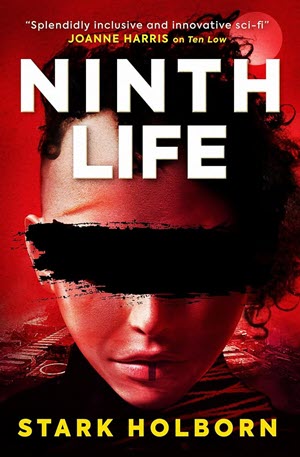 If you, like me, have been avidly following this series from Stark Holborn, you will know that the first two books were called Ten Low and Hel’s Eight. You too many have been expecting the new book to have a Six in the title, and be somewhat bemused by the reversal of the counting sequence. However, there is sense to this (or at least what passes for sense on Factus, the Outlaw Moon).
If you, like me, have been avidly following this series from Stark Holborn, you will know that the first two books were called Ten Low and Hel’s Eight. You too many have been expecting the new book to have a Six in the title, and be somewhat bemused by the reversal of the counting sequence. However, there is sense to this (or at least what passes for sense on Factus, the Outlaw Moon).
 You know the drill by now. Cleric Chih and their neixin, Almost Brilliant, are somewhere out in the world. They get into an adventure. Stories are told, and a mystery is solved. Except, of course, if Nghi Vo did the same thing with every story in the Singing Hills cycle, it would get quite dull. So she doesn’t. While every story has those core elements, each one proceeds very differently. Sometimes we are even deprived of the company of Almost Brilliant, as is the case for most of The Brides of High Hill, though I hope Vo won’t do that too often because the neixin is very much the star of the show.
You know the drill by now. Cleric Chih and their neixin, Almost Brilliant, are somewhere out in the world. They get into an adventure. Stories are told, and a mystery is solved. Except, of course, if Nghi Vo did the same thing with every story in the Singing Hills cycle, it would get quite dull. So she doesn’t. While every story has those core elements, each one proceeds very differently. Sometimes we are even deprived of the company of Almost Brilliant, as is the case for most of The Brides of High Hill, though I hope Vo won’t do that too often because the neixin is very much the star of the show.
 Once upon a time there was a princess in a tower.
Once upon a time there was a princess in a tower.
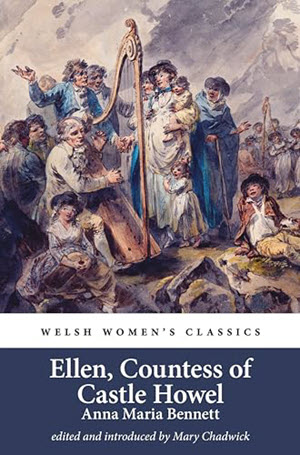 One of the interesting things about conquests and colonization is how language shifts as a result. England was conquered by the Normans in 1066. The Norman aristocracy continued to speak French for a long time thereafter, but the English people never adopted that language and eventually the nobility started speaking English. It took the Normans a lot longer to extend their conquest into Wales, and it wasn’t really until the time of Henry VIII that Wales became fully subsumed into the British state. People in Wales continued to speak Welsh right up until the 19th Century, when the Victorians decided that the Welsh should be forced to speak English, on pain of strict punishment. Since Devolution, the Welsh language has seen something of a revival, at least in official spheres, but the rise of English as a world language has made it hard to explain to young Welsh people why they should have to learn their native tongue.
One of the interesting things about conquests and colonization is how language shifts as a result. England was conquered by the Normans in 1066. The Norman aristocracy continued to speak French for a long time thereafter, but the English people never adopted that language and eventually the nobility started speaking English. It took the Normans a lot longer to extend their conquest into Wales, and it wasn’t really until the time of Henry VIII that Wales became fully subsumed into the British state. People in Wales continued to speak Welsh right up until the 19th Century, when the Victorians decided that the Welsh should be forced to speak English, on pain of strict punishment. Since Devolution, the Welsh language has seen something of a revival, at least in official spheres, but the rise of English as a world language has made it hard to explain to young Welsh people why they should have to learn their native tongue. One of the reasons I’m interested in the subject of Welsh Writing in English is to enable me to track down Welsh science fiction and fantasy. There have been a few science fiction novels written in Welsh. Not all of them have been translated into English. There are also Welsh people who are famous in the SF&F community: Al Reynolds, Jo Walton and Gareth Powell, for example. There are Welsh immigrants you will have heard of too, including Jasper Fforde, Stephanie Burgis and Tim Lebbon. Mostly these folks are unknown on the Welsh literary scene. But there are also people writing SF&F in Wales, and being published in Wales, who seem completely unknown in the wider SF&F world.
One of the reasons I’m interested in the subject of Welsh Writing in English is to enable me to track down Welsh science fiction and fantasy. There have been a few science fiction novels written in Welsh. Not all of them have been translated into English. There are also Welsh people who are famous in the SF&F community: Al Reynolds, Jo Walton and Gareth Powell, for example. There are Welsh immigrants you will have heard of too, including Jasper Fforde, Stephanie Burgis and Tim Lebbon. Mostly these folks are unknown on the Welsh literary scene. But there are also people writing SF&F in Wales, and being published in Wales, who seem completely unknown in the wider SF&F world.